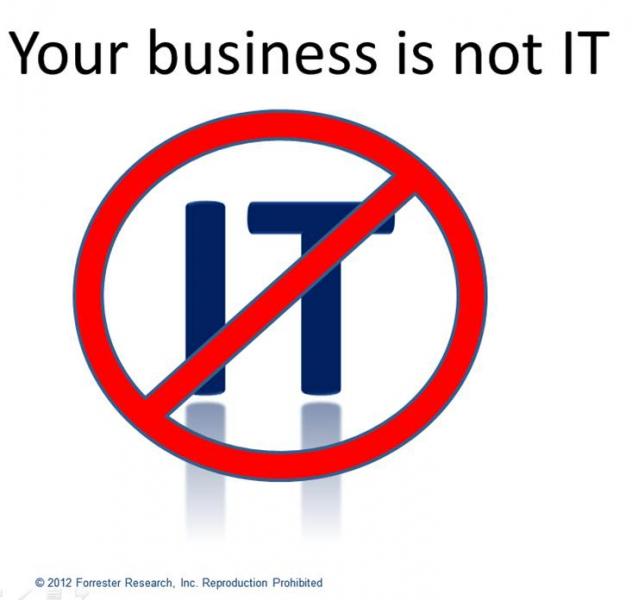5 Steps to transform IT from Order-taker To Business Partner: Part 2
Way back in September, I promised a series of blogs addressing this subject. I had high hopes of delivering a post a week for five weeks on the topic. Needless to say . . . life interjected!
So here, a little later than planned, is the second post in the series.

Step 1 – Change where you work
If I had a thousand bucks for each time I’ve heard someone in technology management say “IT and the business,” I’d have retired long ago. And it’s not just something we hear in technology circles either. The plain truth is technology professionals have been using isolationist language for decades. I say isolationist because any time we refer to "IT and the business” as if they were two different entities, we are creating an artificial divide. As a department of the business, IT is very much part of “the business.”
When technology leaders create this divide between the technology group and the rest of the business, it separates their actions from the purpose of the business. Technology professionals start to see themselves as some sort of technology service provider to the business. But the truth is that the technology team should be integral to delivering value to the customer. If “the business” wanted a technology service provider, the leadership team would outsource IT. Unfortunately, one consequence of managing IT like a vendor is that it becomes much easier for the leadership team to make that outsourcing decision.
Interestingly, when we examine high-performing technology organizations, they tend to view their world very differently. Instead of referring to “the business” as if it were a customer of IT Inc., the employees in these organizations think of themselves as integral to the business — they are the business. And they are completely focused on the business' mission and goals.
It’s unlikely you’ll hear talk of “customers” in these technology organizations unless they are referring to the end customer of the business. Non-IT employees are business partners or more simply referred to by their business function — these employees are not customers.
Another facet of the need to change where you work surrounds the core role of technology management in the firm. Unless you work for Oracle, SAP, or a similar enterprise, you are not in the software business. The role of technology management is not to develop applications; instead, the focus must be on using technology and information assets to deliver value to the customer and operational efficiency to the enterprise.
Getting this first step right isn’t easy for many technology management organizations. It requires technology professionals to fundamentally change their thinking, and that’s a hard thing to bring about. But for CIOs willing to lead the transition, the improved recognition of the value of technology in the business will make the journey worthwhile.